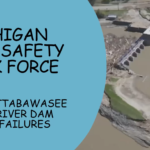This three-part G-res tutorial video series will help you gain a basic understanding of the G-res Tool and how to find information needed to model the net carbon footprints of your local reservoirs.
Developed by the International Hydropower Association and the UNESCO Chair in Global Environmental Change, G-res is a modeling tool for researchers and hydropower companies to estimate and report net emissions from reservoirs. The tool is free for personal use, but results must be validated in order to publicly disclose them.
The G-res tool is a great way to estimate greenhouse gas (GHG) emissions from reservoirs, in part because it was designed by the hydro industry and therefore is harder for hydro operators to discount.
This video series was created by Virginia Scientist-Community Interface (V-SCI) in partnership with Alabama Rivers Alliance and with support from the Hydropower Reform Coalition. Please refer to the official G-res Guidance Documents or reach out to the G-res team for definitive answers to any questions about the modeling tool. Official trainings are also available through G-res by clicking here.
The tutorial video uses data from the Harris Project on the Tallapoosa River.


 HRC or member-contributed
HRC or member-contributed